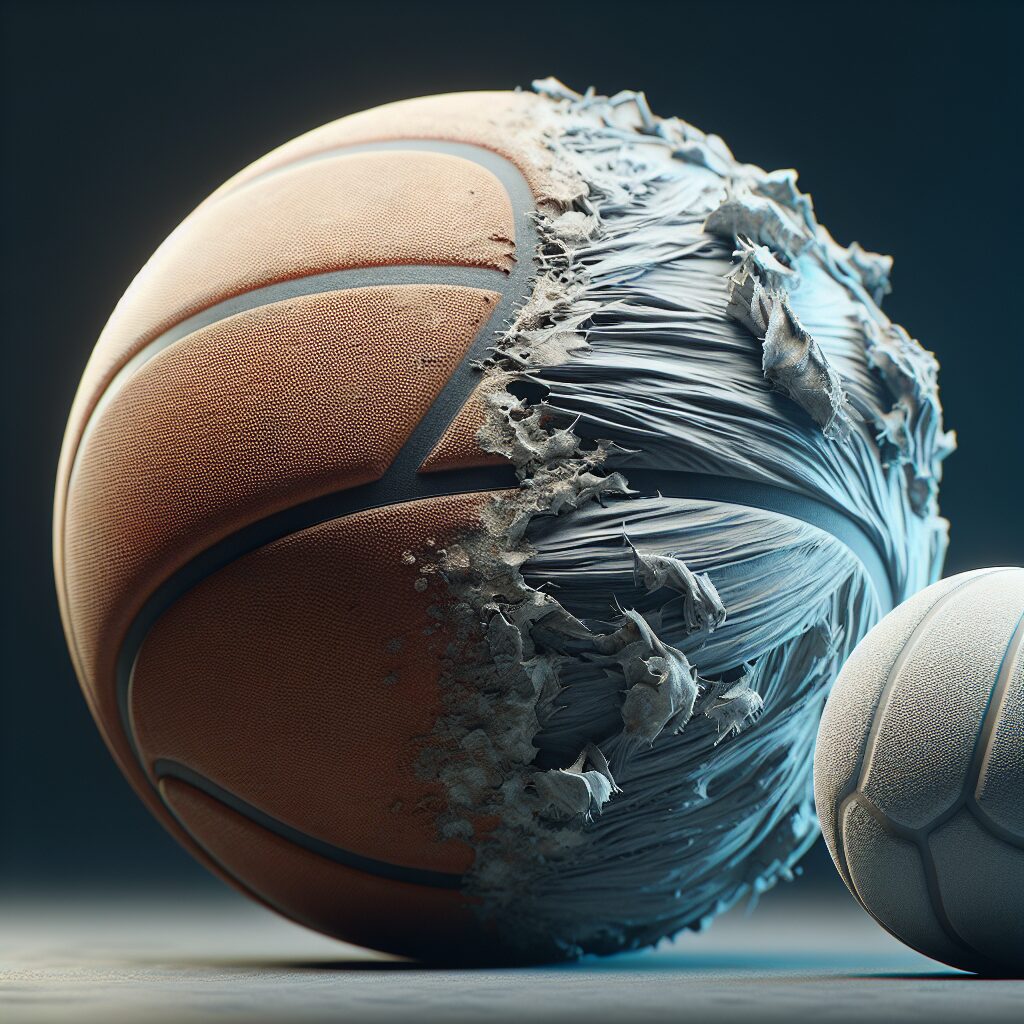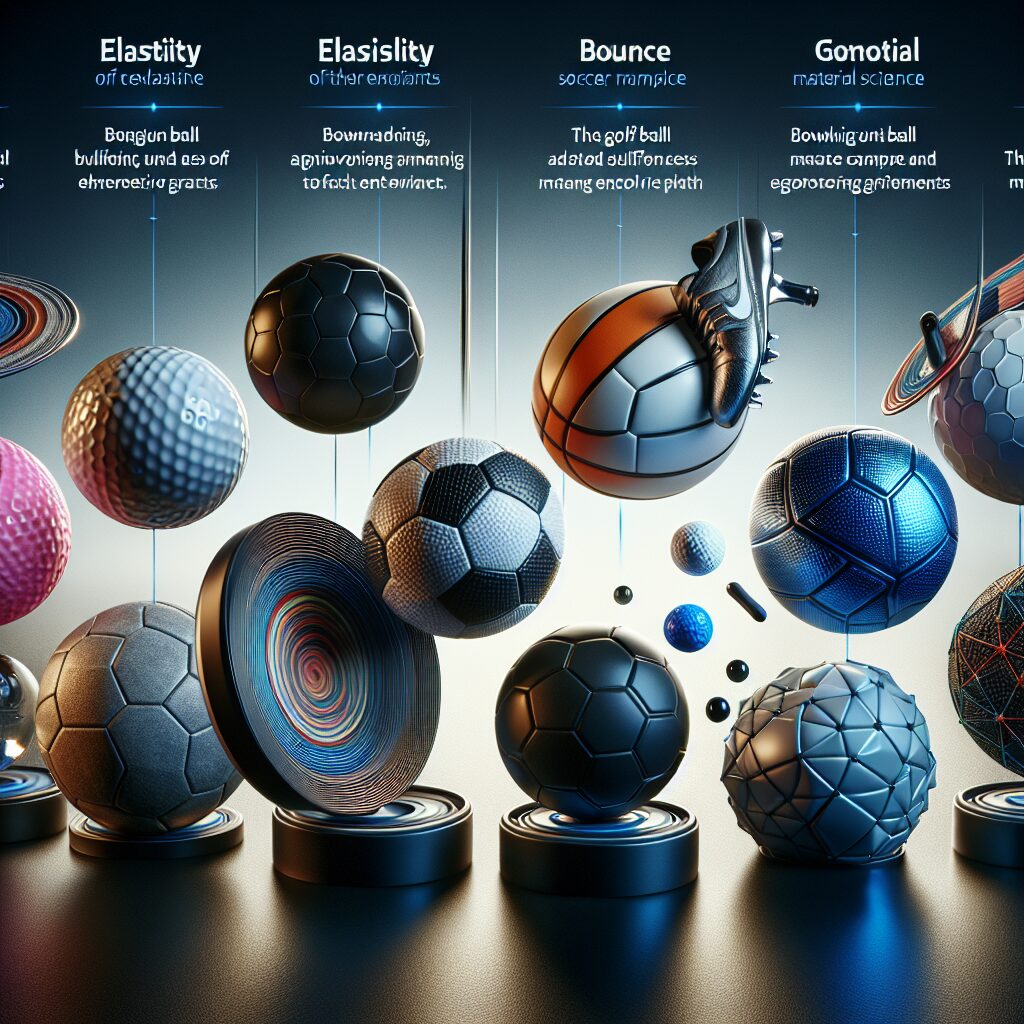Wear and Tear Analysis: Unveiling Ball Resilience
In the world of sports, the durability and resilience of a ball play a crucial role in determining the outcome of a game. Whether it’s a soccer ball being relentlessly kicked across the field or a basketball being fiercely dribbled during a high-intensity match, wear and tear is an inevitable reality. The exceptional performance of a ball depends on its ability to withstand the stressors of the game and maintain its shape and bounce over time. Understanding the wear and tear analysis of balls becomes paramount to ensure fair play and optimal performance.
At the heart of wear and tear analysis lies the determination of a ball’s resilience. Resilience refers to the ball’s ability to regain its original shape and energy after being subjected to external forces, such as impacts or deformation. Factors like material composition, manufacturing techniques, and environmental conditions significantly influence a ball’s resilience. For instance, balls composed of high-quality synthetic materials tend to exhibit greater elasticity, allowing for higher bounce and better control during play. Additionally, the manufacturing process, including the use of advanced molding techniques and precise stitching, can enhance a ball’s resilience by reinforcing structural integrity.
Now that we have grasped the importance of wear and tear analysis and the significance of ball resilience, let’s delve deeper into the key takeaways of this article. We will explore the various impacts that wear and tear can have on ball performance and durability. Additionally, we’ll discuss the specific features to consider when analyzing the wear and tear of balls, along with practical insights on maintaining their optimal performance. So, let’s uncover the secrets behind a ball’s longevity and resilience, ultimately ensuring fair and exciting games for players and viewers alike.
Key Takeaways
1. Wear and Tear Analysis: Unveiling Ball Resilience provides an in-depth analysis of the effects of wear and tear on ball resilience, which is crucial in various industries such as sports, manufacturing, and automation.
2. The research revealed that wear and tear significantly impact the resilience of balls, leading to reduced performance and potential failure over time. Understanding this phenomenon is essential for improving product design, performance, and overall durability.
3. Different factors contribute to wear and tear on balls, including friction, impact, surface roughness, and operating conditions. By studying these factors, manufacturers can better understand the mechanisms behind ball degradation and develop strategies to enhance resilience.
4. Advanced testing methods, such as hardness measurements, surface profilometry, and fatigue testing, are used to assess wear and tear effects on ball resilience. These techniques provide valuable data for predicting a ball’s lifespan and ensuring its optimal performance during its operational life.
5. The findings of this research encourage the adoption of proactive maintenance strategies to mitigate the negative effects of wear and tear. Regular inspection, lubrication, and replacement of worn-out balls are crucial steps to maintain optimal performance and efficiency in various applications.
What is the Impact of Wear and Tear Analysis on Unveiling Ball Resilience?
The Importance of Wear and Tear Analysis in Ball Resilience
Wear and tear analysis plays a crucial role in understanding the resilience of balls used in various sports. This analysis allows us to gain insights into how balls perform under different conditions and examine the effect of continuous use on their durability. By delving into wear and tear analysis, we can uncover valuable information about ball resilience, which can aid in improving the quality and longevity of sports equipment.
Factors Affecting Ball Resilience
When it comes to ball resilience, multiple factors come into play. Understanding these factors is essential to comprehending the wear and tear analysis process. Some of the key factors affecting ball resilience include:
- Material Composition: Different materials used in ball construction have varying levels of resilience. Whether it’s rubber, leather, or synthetic materials, the composition directly affects how a ball responds to external forces.
- Surface Conditions: The playing surface, such as grass, asphalt, or indoor courts, can have a significant impact on ball wear. Rough surfaces tend to wear out balls faster, affecting their resilience over time.
- Frequency and Intensity of Use: Balls subjected to frequent and intense use are more likely to experience accelerated wear and tear, leading to decreased resilience.
- Environmental Factors: Extreme temperatures, humidity, and exposure to sunlight can all impact the resilience of a ball. Understanding these environmental factors is crucial in analyzing wear and tear.
Methods for Wear and Tear Analysis
To unveil ball resilience, various methods for wear and tear analysis are employed. These methods allow researchers and manufacturers to gather data and make informed decisions regarding ball design and durability. Some common wear and tear analysis methods include:
- Visual Inspection: By visually examining the surface of a ball, experts can identify signs of wear and tear, such as cracks, scratches, or loss of bounce.
- Weight Measurement: Assessing the weight of a ball before and after use can indicate the extent of material loss and provide insights into its resilience.
- Compression Testing: This method involves subjecting the ball to controlled forces to measure its ability to bounce back to its original shape. Compression testing helps assess the resilience and elasticity of a ball.
- Drop Test: By dropping a ball from a specific height and analyzing its rebound, experts can evaluate its resilience and ability to absorb impact.
Benefits of Wear and Tear Analysis in Ball Resilience
Engaging in wear and tear analysis of balls brings several benefits, both for manufacturers and users alike:
- Improved Product Development: By understanding how wear and tear affects ball resilience, manufacturers can make informed decisions during the product development phase. This leads to the creation of more durable and resilient sports equipment.
- Enhanced Performance: Athletes and sports enthusiasts rely on balls with optimal resilience to achieve their best performance. Wear and tear analysis helps identify areas for improvement in ball design, leading to enhanced performance on the field.
- Cost-Effective Measures: Analyzing wear and tear allows for the identification of weak points in ball construction. By addressing these issues, manufacturers can minimize material wastage and increase the lifespan of balls, resulting in cost-effective production.
Key Tips for Conducting Wear and Tear Analysis
To ensure an effective wear and tear analysis of ball resilience, consider the following tips:
- Implement Regular Inspection: Schedule routine inspections to identify signs of wear and tear early.
- Record and Compare Data: Maintain detailed records of wear patterns and analyze the data to pinpoint areas for improvement.
- Use Specialized Equipment: Make use of specialized equipment designed for wear and tear analysis, such as compression testers and weighing scales.
- Consider Environmental Factors: Take into account the impact of varying environments on ball resilience during the analysis process.
- Collaborate with Experts: Seek guidance from experts in material science, sports engineering, or related fields to gain deeper insights into wear and tear analysis methods.
Frequently Asked Questions
1. What is wear and tear analysis?
Wear and tear analysis refers to the process of assessing the damage caused to an object or material over time due to regular use and exposure to various external factors.
2. How is wear and tear analysis useful in the context of ball resilience?
Wear and tear analysis is crucial in understanding the factors that affect the resilience of balls. It helps identify the specific wear patterns, material degradation, and other factors that can impact the durability and performance of balls.
3. What are the key factors that contribute to ball wear and tear?
Several factors can contribute to ball wear and tear, including the playing surface, environmental conditions, frequency of use, ball quality, and the intensity of the game or sport.
4. How is the wear and tear of a ball measured?
The wear and tear of a ball can be measured through various techniques, including visual inspection, weight loss assessment, dimensional changes, and surface roughness analysis.
5. Why is ball resilience important?
Ball resilience is crucial because it directly affects the performance, bounce, and overall playability of balls in different sports. Determining the factors that influence resilience helps manufacturers improve the quality and durability of balls.
6. Can wear and tear analysis be used to predict the lifespan of a ball?
While wear and tear analysis provides valuable insights into the damage caused to a ball, it is challenging to accurately predict the lifespan of a ball solely based on this analysis. Factors like usage conditions and playing techniques also play a significant role.
7. How can wear and tear analysis help in ball maintenance and repair?
Wear and tear analysis helps identify the specific areas of damage or degradation in a ball. This information can be used to develop effective maintenance and repair strategies to extend the lifespan and optimize the performance of the ball.
8. Are there any preventive measures to minimize ball wear and tear?
Yes, there are preventive measures to reduce ball wear and tear. These include proper storage, regular cleaning, avoiding harsh playing surfaces, monitoring usage frequency, and adhering to the manufacturer’s guidelines for ball maintenance.
9. Is ball resilience the same for all sports?
No, ball resilience can vary depending on the specific sport and its requirements. Different sports have varying demands in terms of ball bounce, reaction, and durability, leading to differences in the design and materials used for manufacturing balls.
10. How can wear and tear analysis benefit players and sports organizations?
Wear and tear analysis benefits players and sports organizations by providing valuable insights into the performance and durability of balls. It helps them make informed decisions regarding ball selection, maintenance, and improvements, ultimately enhancing the overall playing experience.
Final Thoughts on Wear and Tear Analysis: Unveiling Ball Resilience
Wear and tear analysis plays a significant role in understanding the dynamics of ball resilience. By examining the wear patterns, material degradation, and assessing other factors, we can gain insights into how to improve ball quality, durability, and performance. This knowledge benefits players, sports organizations, and manufacturers in ensuring a better game experience and long-lasting balls that stand the test of time.
As technology and research continue to advance, wear and tear analysis methods will likely become even more sophisticated, providing us with increasingly accurate and comprehensive information on ball resilience. By consistently exploring new ways to analyze and enhance ball durability, we can continue to push the boundaries of sports performance and enjoyment.




